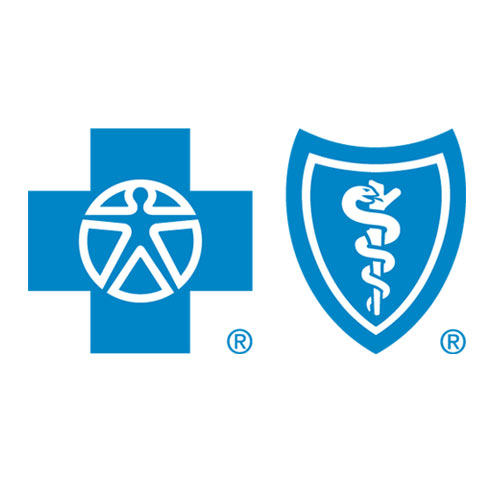Extra help available for managing depression and anxiety in Spanish
September 29, 2022Nearly 10% of Americans suffer from depression. The impact is harshest among teens and young adults where the depression rate is 17% and rising the fastest according to the National Survey on Drug Use and Health. But help is available and, in many cases, readily accessible and even free.
![]() For Blue Plus members ages 13 to 64 enrolled in a Minnesota Health Care Program plan, support to address depression and similar conditions includes no-cost access to Learn to Live— an innovative, online mental health program which is now available in both Spanish and English. Learn to Live is also available to some Blue Cross and Blue Shield of Minnesota members (ages 13+) covered under employer health plans.
For Blue Plus members ages 13 to 64 enrolled in a Minnesota Health Care Program plan, support to address depression and similar conditions includes no-cost access to Learn to Live— an innovative, online mental health program which is now available in both Spanish and English. Learn to Live is also available to some Blue Cross and Blue Shield of Minnesota members (ages 13+) covered under employer health plans.
“Learn to Live provides confidential support, powerful tools and convenient live services to help manage the myriad stressors of these times and to empower people to build resilience and improve their emotional wellbeing,” explains Dale Cook, CEO and co-founder of Learn to Live.
Removing barriers to care to address disparities
A recent report from the Centers for Disease Control and Prevention (CDC) found that those who already have behavioral health conditions and/or experience disparities in health and economic status may be at the greatest risk for anxiety, depression or related conditions. The study also found that these issues are significantly higher among younger adults, Latinx Americans, essential workers and unpaid adult caregivers.
“Access to mental health care and support is a top priority and we are committed to removing barriers to care and providing additional resources like Learn to Live,” says Christine Reiten, vice president of Medicaid at Blue Cross and Blue Shield of Minnesota.

An expert look at Learn to Live
 This access is more beneficial than ever now that the program is available in Spanish. For a look at how the program works, we spoke with Dr. Russ Morfitt, co-founder and chief psychology officer, about Learn to Live and why it is highly important for people to get mental health support, particularly during times of stress and trauma.
This access is more beneficial than ever now that the program is available in Spanish. For a look at how the program works, we spoke with Dr. Russ Morfitt, co-founder and chief psychology officer, about Learn to Live and why it is highly important for people to get mental health support, particularly during times of stress and trauma.
Q. How does Learn to Live work?
Dr. Morfitt: Learn to Live provides digital behavioral health programs and assessments to people dealing with stress, depression, insomnia, social anxiety and substance use concerns. Our members complete assessments to better understand their behavioral health, then use one of our programs on their phone, tablet or laptop to learn evidence-based strategies and tools, drawn from cognitive behavioral therapy (CBT).
The simple five-minute comprehensive assessment available on the Learn to Live site allows anyone to learn about themselves and the symptoms they may be experiencing. People may choose one or more programs to experience a guided journey to address the challenges they are working through. At any point, members can choose a Learn to Live member coach for encouragement and accountability. Coaches are fully credentialed and available 24/7.
Q: Who can benefit from participation in Learn to Live and how?
Dr. Morfitt: Almost anyone. About half our members who complete the comprehensive assessment have at least one score in the clinical range, meaning they would likely be diagnosed with a clinical condition like depression or anxiety if they were to be evaluated by a physician or psychologist like myself.
That means the other half of people might have concerns, but not at such a high level. They can still benefit by learning the same powerful strategies and using the tools that allow them to build resilience and well-being and often prevent their modest challenges from growing into more serious ones.
For example, many people are unaware that their insomnia is at a serious level and that there are powerful therapy tools available to them to dramatically improve their sleep.
Q: Why is digital access to behavioral health care so important?
Dr. Morfitt: People want to be able to access these tools on their own terms— and they turn to their smartphones first since their phones are always with them. Mobile phones work especially well for services like Learn to Live since people can take advantage of any break in their day and spend five to ten minutes on their program. And that’s, in fact, how many people access Learn to Live, in the gaps they find in their days, returning to their program each time they have a moment or a concern.
Three recently published studies have demonstrated the effectiveness of Learn to Live’s programs and services. One of those studies compared Learn to Live’s programs to in-person therapy and found that, while both were impactful, Learn to Live’s programs tended to produce even more gains than in-person therapy for members who completed five or more lessons.
Q: Typically, what prevents people from accessing behavioral health care?
Dr. Morfitt: It’s true that people are reluctant to use traditional behavioral health services. Three out of four people who suffer from clinical-level mental health problems like depression and anxiety will never seek out therapy. It’s even more pronounced with substance use problems. Only one in 10 people with substance use problems seek out care for their concerns.
The primary barriers are stigma, accessibility and cost. Research shows we are successfully reducing stigma toward behavioral health, but many sufferers still worry that people will judge them negatively. Others aren’t able to take time off work, can’t find a provider, or simply don’t know where to start. And often money is tight— especially these days— so cost can become an obstacle.
When people have access to Learn to Live, these barriers are all overcome. Our members use our programs and services assured of privacy. Anyone can go to the website, complete the assessment and immediately get help using evidence-based strategies and tools. And, when an insurer, employer or university covers the costs, their members, employees or students can privately address their concerns on their own schedule, using their own device without a financial burden.
Q: Why should people use a program like Learn to Live, even if they might believe they can “get through it on their own?”
Dr. Morfitt: Two reasons: the assessment can guide their efforts and the programs can provide an evidence-based journey. Many people are surprised by the results of their five-minute comprehensive assessment. For example, they knew they were stressed, but they were unaware they had significant depression. They were guided by the feedback to work on something unexpected and were more likely to be successful.
Our members tell us they still experience the same kind of “I did it myself” satisfaction, knowing they put in their own efforts, but they recognize the benefits of a guided journey, especially those who choose the coaching option.
In our survey, 95% of our members report they are meeting their own personal goals. More than 80% report that their problems no longer affect their performance at work or cause them to miss much work. Additionally, college students report they are less likely to drop out. These improvements are even more pronounced when users engage with Learn to Live coaches or use Teammates.
Q. Can people of all ages benefit from Learn to Live programs?
Dr. Morfitt: Yes. From older adults experiencing the stress of social isolation to teens who are feeling depressed, anxious or are struggling with substances, anyone can benefit.
Learn more
For more information and to take the comprehensive assessment, visit learntolive.com.
Blue Cross members should contact a member services representative to determine if the program is covered by their health plan.

